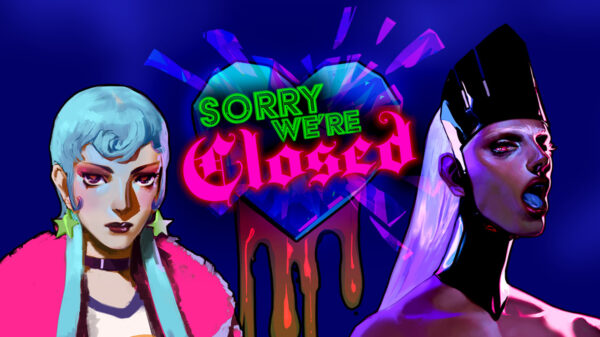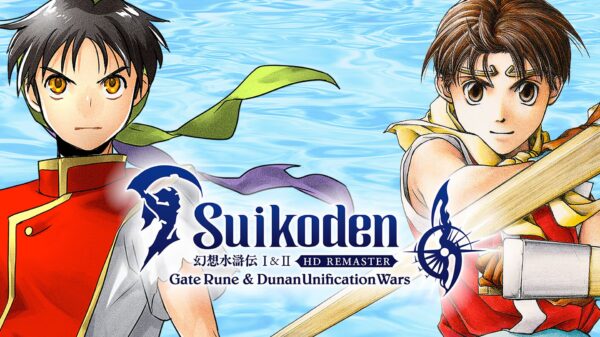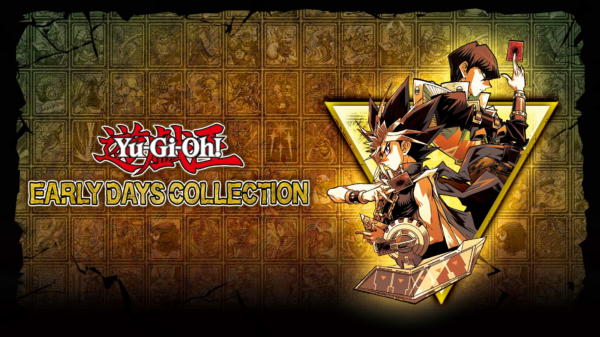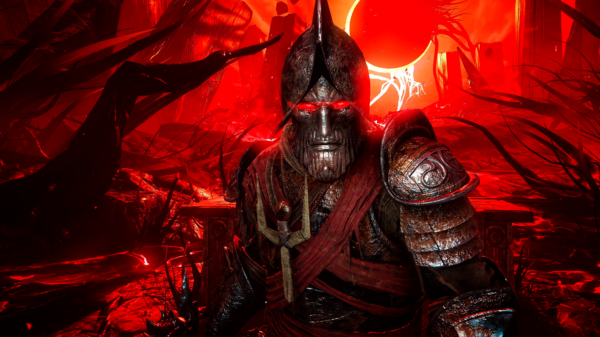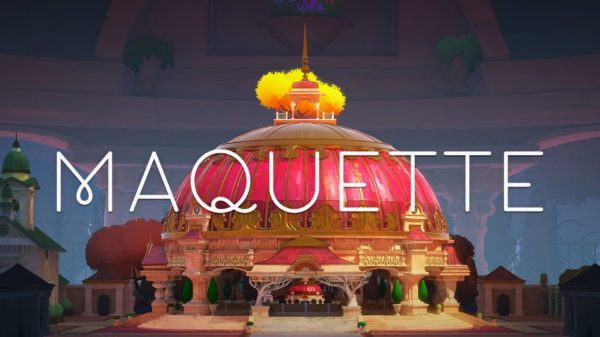It’s the first day of PAX East so you know what that means: running on 40 hours of no sleep and running from appointment to appointment bay-bee! We saw a lot of neat games today and while the bigger publishers chose to dip out of fear of a beer, that meant the indie games shown even brighter.
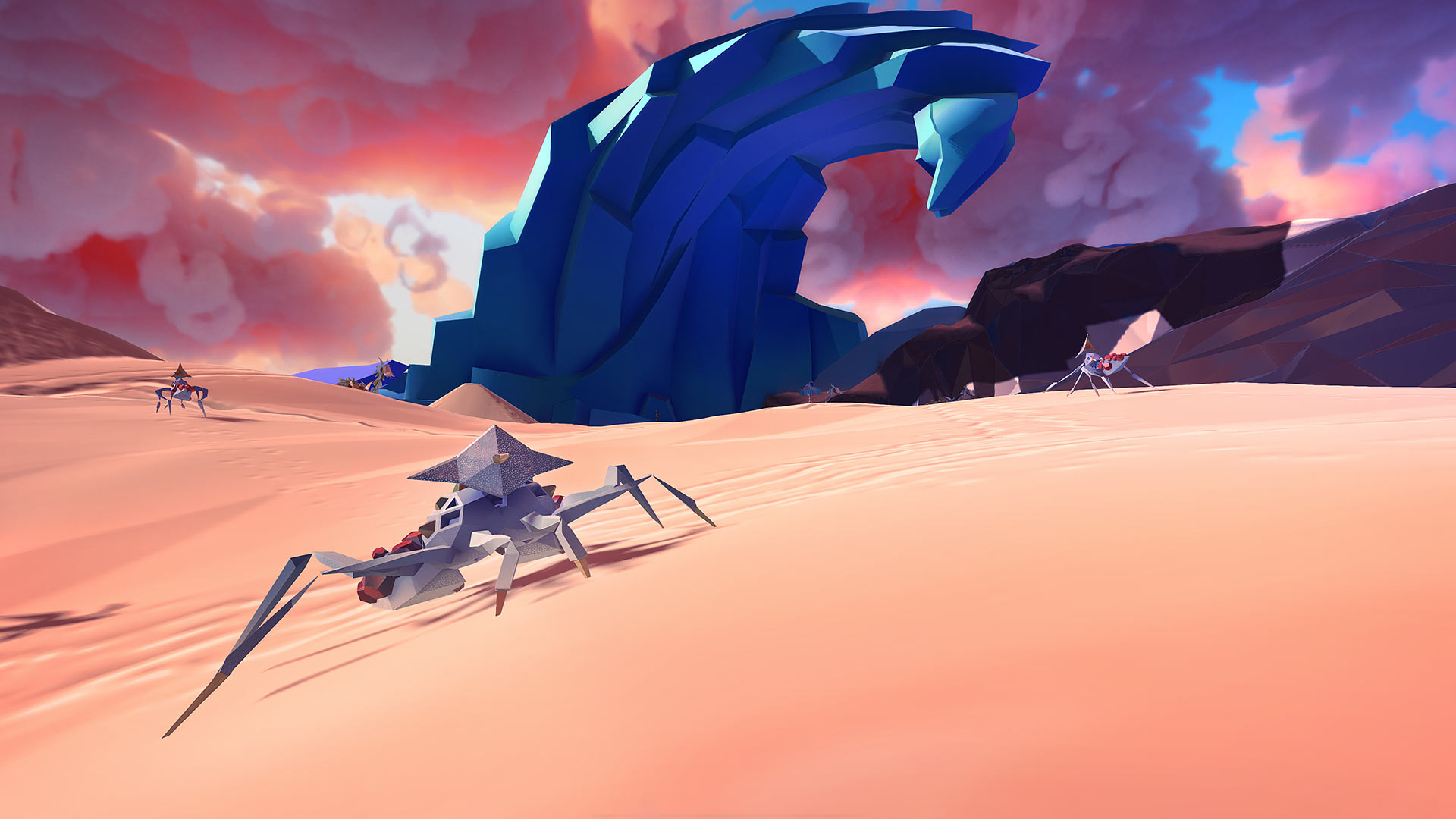
Paper Beast
Paper Beast is a PSVR game by developer Pixel Reef that places you into this bizarre, simulated world where you’ll solve puzzles in this almost alien landscape, full of origami-esque creatures you can interact with. Using the move controllers, you’re able to grab onto the creatures in the environment or any objects you may find, like a lava cube I found hidden off a path. While the game has a story mode where you’ll solve puzzles across a host of levels, the bulk of my demo was spent in the sandbox mode. Feeling almost like a VR version of From Dust, you can sculpt and play with a piece of terrain. I immediately started adding water to my small sand island, flooding the area and seeing the water physics interact with the landscape as it moved through the dunes. Paper Beast is incredibly physics-focused, with a multitude of toys to drop into these sandbox environments to see how they react with other objects. I started my time by dropping a tree that spewed water out and threw a zero-g gadget by it, causing the water the tree was spraying to shoot off into the air. An icicle item I then grabbed turned that water into ice and a tornado I slapped on top of all of that just caused complete chaos. You can also drop creatures, some passive some predators, who will walk across your map and interact with whatever you’ve placed. The game itself has a gorgeous, eye catching look to it and seeing all these effects interact with each other is something to marvel at. I’m hesitant to call Paper Beast a “god sim,” but it definitely has elements of it, and I’m interested to try more later this year when it releases.

The Red Lantern
The Red Lantern, debut game by Timberline Studio, Inc., is a game that needs to be played to understand what it’s doing. The trailers show it off as a dog sledding adventure game, and while it is that, you don’t actually have control of the sled. Instead, your pack of dogs will move forward by themselves and you’ll occasionally be given the option to shout at them to turn left or right. As you trudge along the snow you’ll encounter a variety of events like a rabbit running in your way, an abandoned shack to explore, or even a deadly bear. The best way to describe the game would be something more akin to an Oregon Trail, because survival is important in this tundra since you can actually die. As you go through the game, you need to manage not only your own health but that of your dogs as well. Meat, firewood, bullets, etc are all found through the events you’ll encounter. You might find a moose you can hunt for some meat, or maybe follow an owl to a patch of firewood. At any point you’ll be able to make camp to cook your food, take a rest, and most importantly to pet your dogs. It’s a really neat game whose hook maybe isn’t communicated as well in footage as it is just sitting there and playing it. But if a game that’s part visual novel, part survival game, you should keep an eye on The Red Lantern when it releases later in 2020.
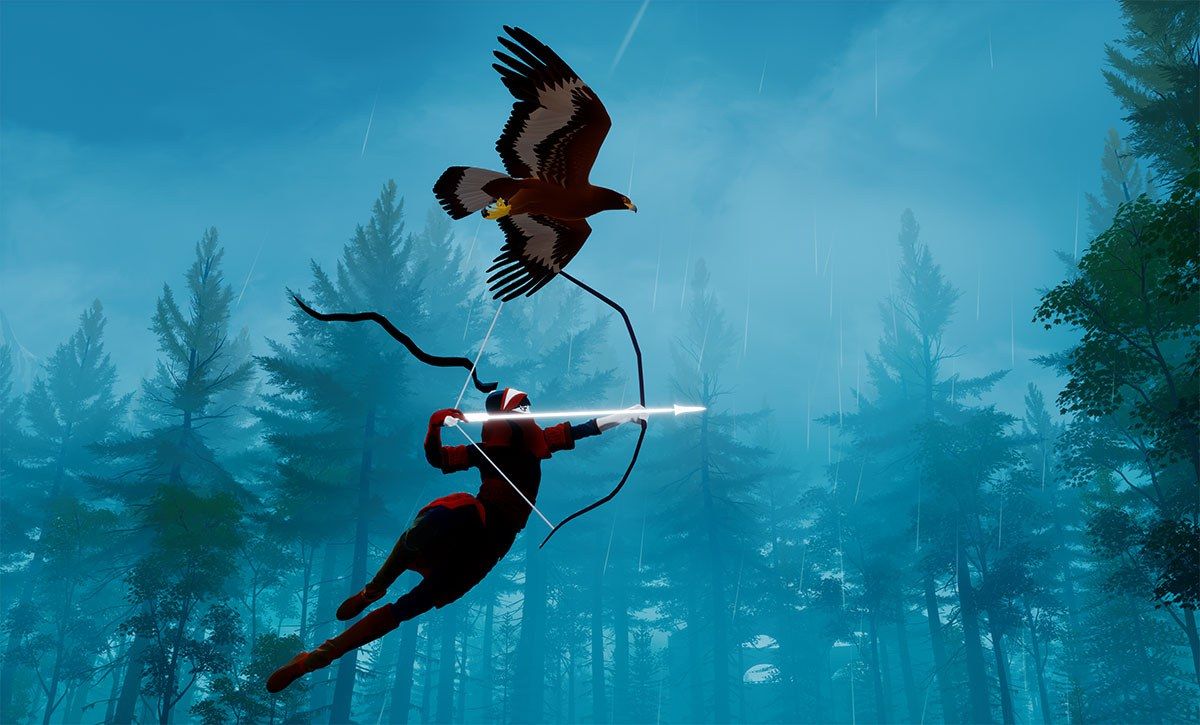
The Pathless
If you came to PAX East and didn’t play The Pathless you completely missed out on what’s easily one of the highlights of the show. Made by Giant Squid, The Pathless has you playing as a character simply titled as “the hunter” who’s in a world being plagued by a corruption that’s affected the land. The game space itself is an open area where you’ll work to cleanse the corruption by collecting runes that will clear areas when you place enough in a tower. What stands out immediately about the game is its mobility; the hunter is fast, and you’ll sprint or slide across the land with a confident deftness. It runs off your stamina which is refilled by hitting floating targets that are generously scattered throughout the land with your bow. You can tap the shoot button to fling an area in a general direction you aim in, or hold it down and the hunter will lock onto the closest target and hit it herself. Being able to rely on the lock-on to make sure you always hit a target while you keep your eyes forward, focusing on moving, helps immensely and looks cool on top of it. Expanding upon your mobility options is an eagle companion the hunter has who will pull you up into the air to help you reach previously unattainable locations. The game almost plays like a rhythm game as you begin to chain all your movement options together to move across the land. If I could think of one way to best describe how moving feels, it would be like getting a good shield slide going in Legend of Zelda: Breath of the Wild. It feels incredibly smooth and I haven’t seen anything like it in a while. Everyone needs to play The Pathless.
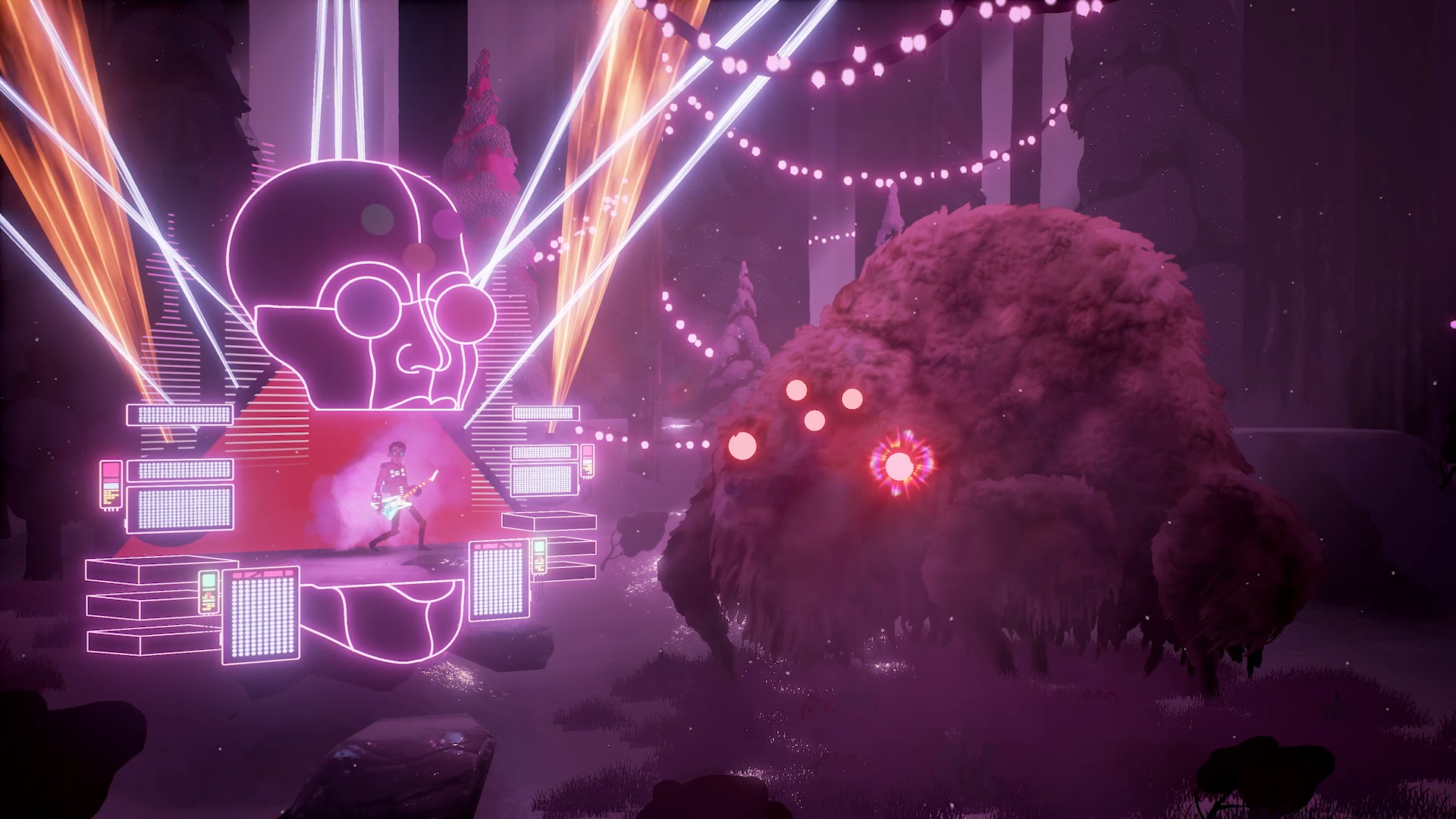
The Artful Escape
I’ve been obsessively following The Artful Escape since its initial reveal and thought it was all over when the game went radio silent for a bit, but those fears are gone now that the game is back with a revamped look and a new publisher. My time with the demo was short, but I was hooked on what I played. When a game marries unique visuals with an interesting sound then I’m sold immediately, and The Artful Escape does that in spades. Playing as aspiring musician Francis Vendetti, you’ll explore a strange psychedelic land with your guitar as you play music to solve various puzzles. I met a kaleidoscope salmon and jammed with a cosmic deer in a control scheme that was sort of like a game of Simon. The Artful Escape is gorgeous and fascinating and I can’t wait to see more of its bizarre world when it releases sometime this year on Xbox One and PC.
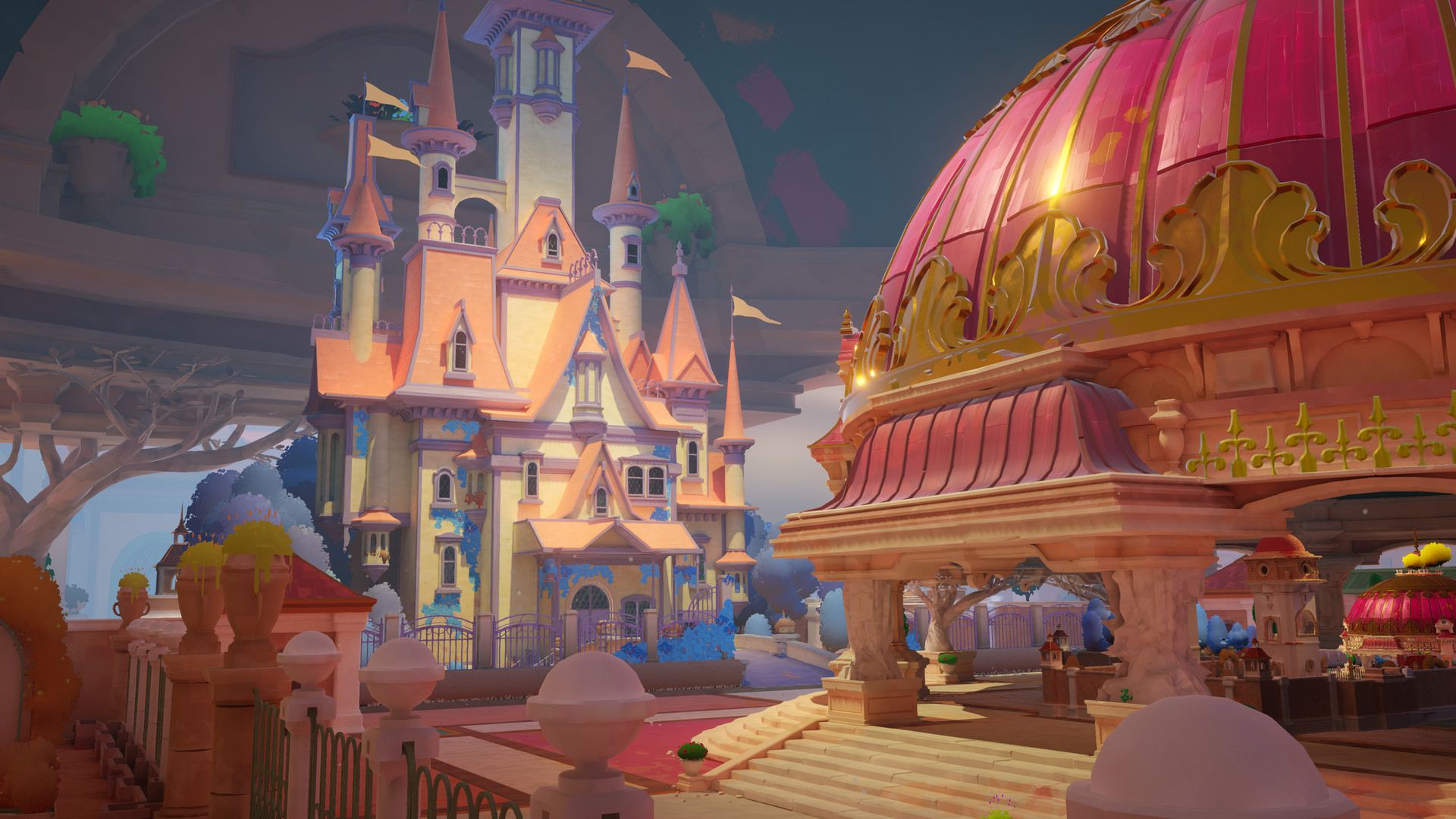
Maquette
Making puzzle games is hard. Making puzzle games that are good is even harder. Making a puzzle game that’s good and also has a plot you genuinely care about is nigh-impossible but developers Graceful Decay seem to be on the right path. Maquette is a clever puzzle game that plops you in an area with a miniature recreation of the zone you’re in right in the center. The game’s gimmick is that whatever exists in the miniature version of the zone will also appear in the actual playspace, albeit to a much larger degree. It’s a formula that leads to a lot of “ah ha!” moments like when I needed to cross a space but couldn’t get access to the toy bridge I had previously used in the same situation. It eventually dawned that you could use a key you used to unlock a previous door as a makeshift bridge as you placed the key in the miniature maquette, a larger one thunderously dropped into the real space as it dropping into the world reverberated across the level. On top of this is a love story that’s told through scribbles on the walls or through narration, that’s given extra effect by some genuinely touching musical tracks. I’m not one to pay attention to any sort of plot a puzzle game tries to force in, but the voice acting writing here is so goddamn earnest in a way you don’t see very often in any sort of media that it had me trying to solve the puzzles to hear the next part of the story, praying things don’t end poorly for the couple. Maquette is nailing every target it’s trying to hit and if you’d be insane to not have it on your watchlist.
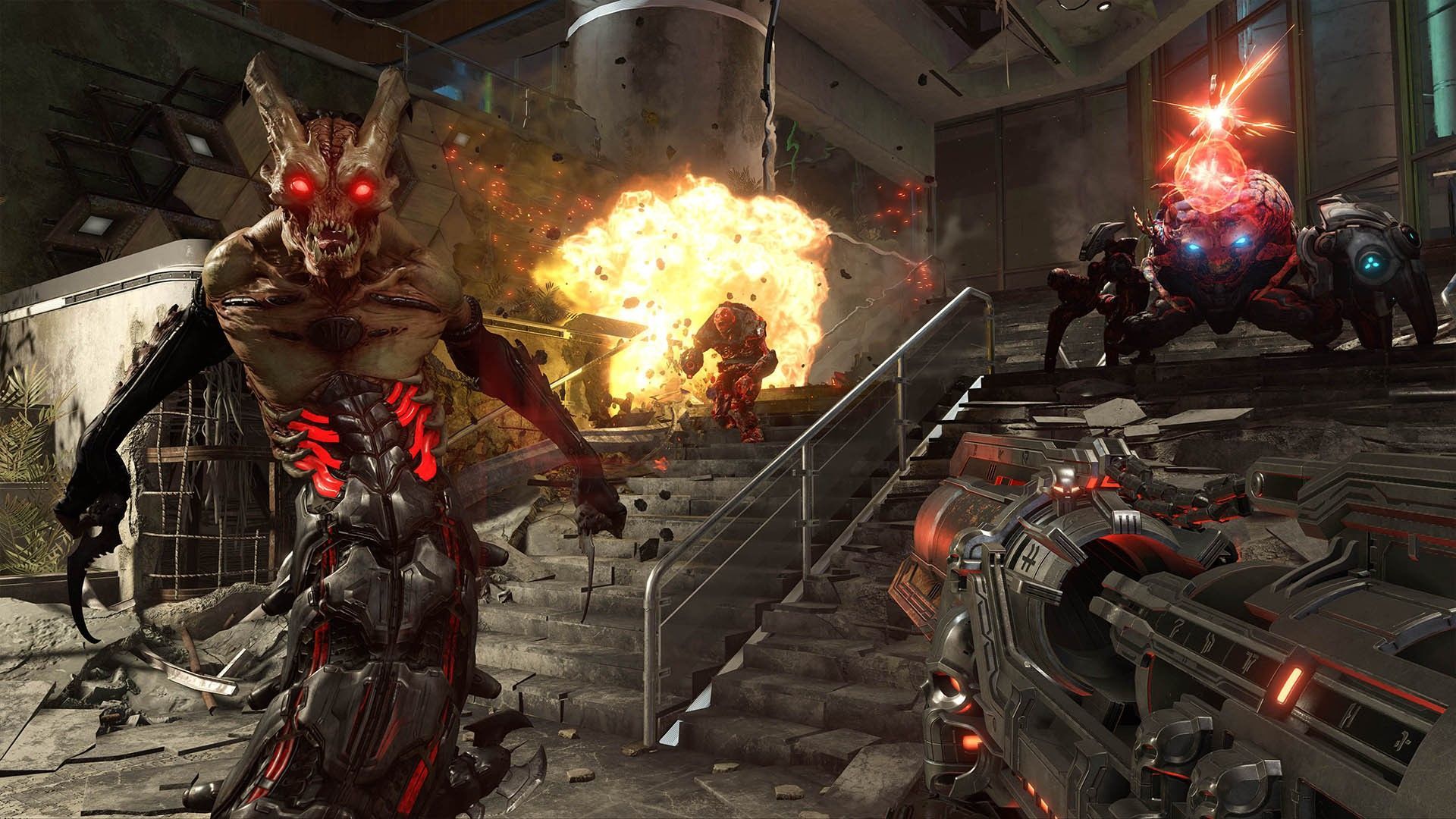
DOOM Eternal
If you’ve been hankering for more Doom then boy let me tell you, Doom Eternal is more Doom. The demo we played placed us at the very start of the game, Earth is in shambles from the invading demon army and the Doom-guy is on his spaceship overlooking the planet as he gets reports of demon activity sent his way. What’s basically the game’s tutorial mission opens with the goal of finding and killing a Hell priest for reasons unknown, but who really needs a reason to kill demons? Being at the start of the game, I didn’t have much in terms of actual new stuff to play with besides the shoulder launcher and the swinging pipes. Swinging around adds an extra layer of mobility that speeds up an already hectic game and the launcher feels immediately satisfying to use as you bounce across the environment tossing quick grenade shots a packs of demons. The core combat itself is still unchanged, just noticeably faster with the added element of three-way battles between you, the demons, and zombieman forces. Being the beginning of the game meant I only had access to the shotgun and heavy rifle, but those were enough to cause some immediate chaos with and getting back into the groove of Doom’s speedy combat was effortless. With its release only a few weeks away, this demo left me eager to sink my teeth into more.
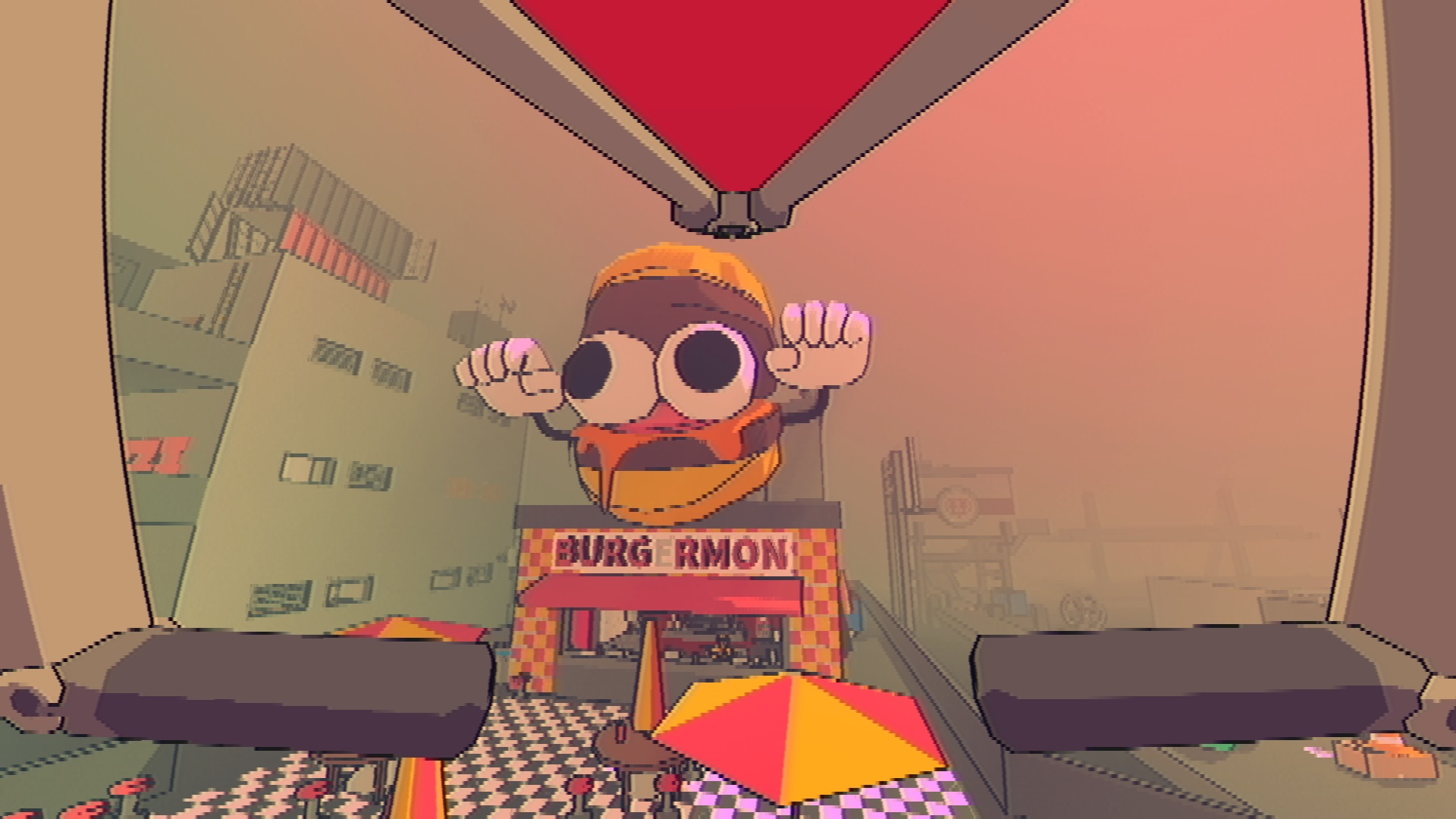
Sludge Life
Sludge Life is a very interesting game. It probably wouldn’t shock you to hear that it’s being picked up by Devolver Digital, as it’s very much their sort of aesthetic but Sludge Life has its own sort of identity that helps it stand out among the pack. Taking a cue from graffiti tagging culture, you’re dropped in this open area where you’ll explore to find new spots to tag, speak with one of the bizarre citizens, find games to play on your computer that has a very Hypnospace Outlaw sort of vibe, and most importantly listen to some good tunes. Jokingly calling it a walking sim wouldn’t be that much of a stretch as you literally walk (or glide if you find the glider) across this sizable area just peeking into whatever corner you can find to see what’s in there. If you can get down with what Sludge Life is throwing down, you’re likely to have a good time with it. It’s a game that’s very much an aesthetic I resonate with and can’t wait to see more. Sludge Life releases later this year.



